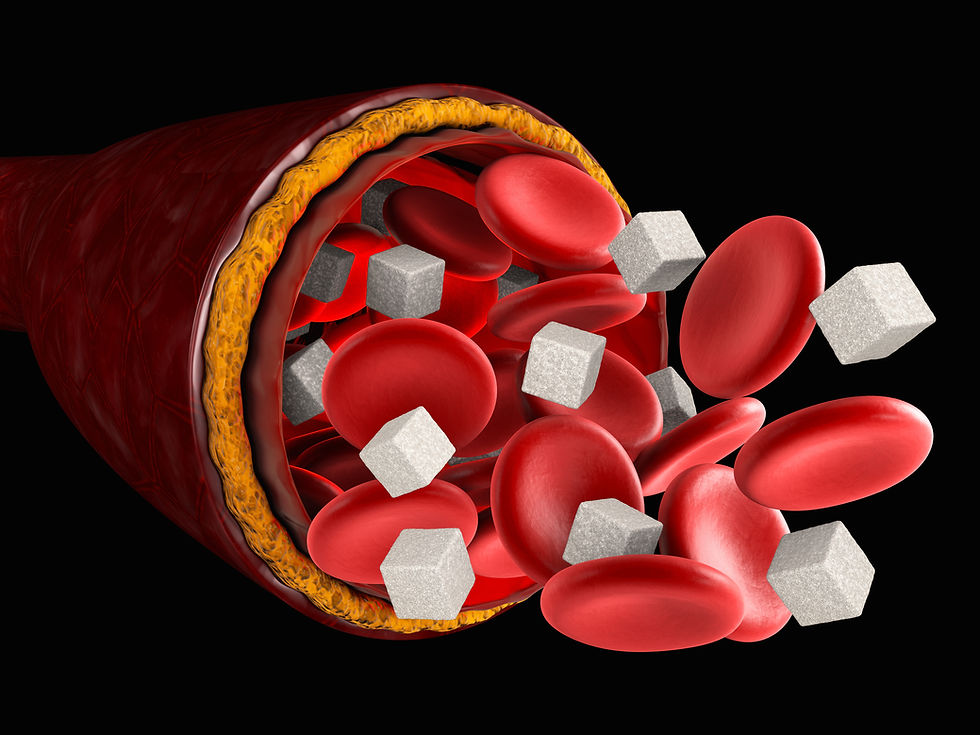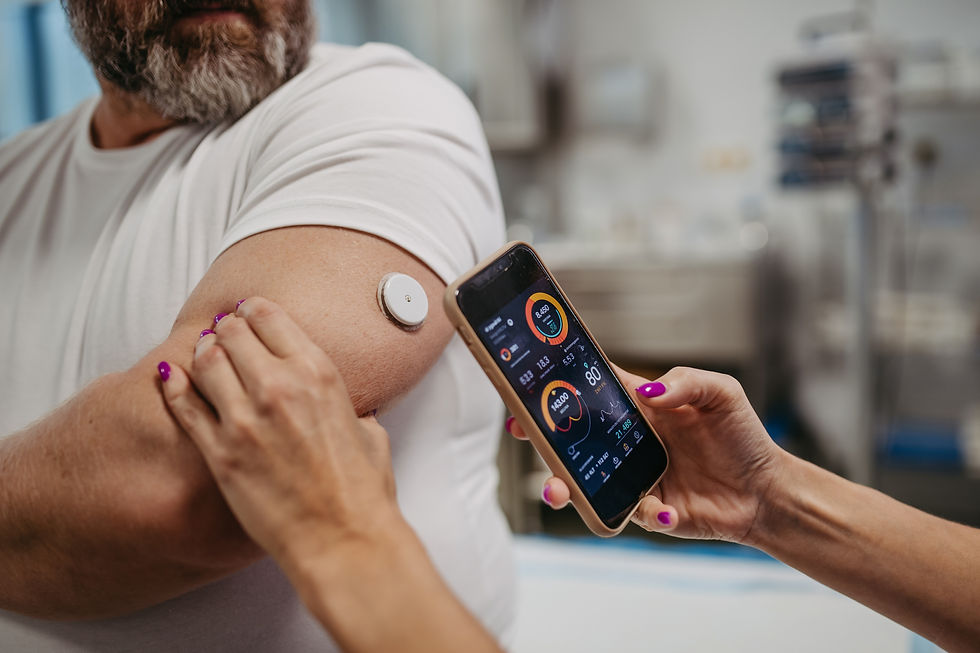🩺 Why More People Are Using Continuous Glucose Monitors. Even Without Diabetes
- Sunny Health DPC

- Aug 7
- 3 min read
Sunny Health DPC | August 2025
At Sunny Health DPC, I care for patients with all types of conditions, but one of the most common concerns I see is blood sugar problems. Whether it’s diabetes or prediabetes, this issue is growing fast.
According to recent data, by the end of 2025:
• About 35% of the U.S. population is expected to be prediabetic
• Around 15% will have full-blown diabetes
That means 1 in 3 people may be prediabetic, and 1 in 7 already diabetic. These are huge numbers, and they matter.

Why Blood Sugar Matters More Than You Think
Diabetes isn’t just a “sugar problem.” It affects many parts of your body:
• Kidneys
• Heart and blood pressure
• Weight and metabolism
• Nervous system and brain
In my practice, I always tell patients:
“If we don’t address your blood sugar first, it’s hard to improve other areas of your health.”
That’s why today, I want to highlight a tool that’s helped many of my patients take back control: The Continuous Glucose Monitor (CGM).

What Is a Continuous Glucose Monitor (CGM)?
A CGM is a small wearable device (usually placed on the upper arm) that measures your blood sugar 24/7. It connects to your phone or reader, so you can see real-time sugar trends throughout the day.
No more finger pricks
No guessing after meals
Alerts for high or low blood sugar
It’s a game-changer, not only for diabetics but also for those at risk.
Cost & Access
Yes, CGMs require a prescription. Insurance sometimes covers them for people with diabetes. For others, out-of-pocket costs have dropped significantly:
• ~$35 for a 2-week sensor
• Easy to apply, easy to remove
• Some pharmacies now carry them over-the-counter (ask your provider)

Why CGMs Help, Even If You’re Just Prediabetic
Here’s what I’ve noticed in my clinic:
• Prediabetic patients often improve their blood sugar dramatically just by seeing how their food affects them in real time.
• Diabetic patients lower their A1c more consistently when using a CGM.
And it’s not just about “eating less” or “cutting carbs.” Most people don’t realize:
Different carbs cause different sugar spikes, even the same food from a different brand can lead to a very different glucose response.
For example:
• Bread from one brand may spike your sugar more than another.
• Starting your meal with fruit vs. protein vs. bread affects your blood sugar differently.
• Adding fat (like olive oil) or fiber to a meal may slow down sugar spikes.

CGMs Help You Learn Your Body’s
Unique Patterns
CGMs help answer questions like:
• Why am I crashing after lunch?
• Why is my sugar high in the morning, even if I didn’t eat?
• Which snacks or drinks are secretly causing problems?
These devices give personalized data, not just general rules.
Downsides? A Few, But Minor
Some people may notice:
• Mild skin irritation or allergy to the adhesive
• Occasional errors in readings
• They may not be 100% accurate during rapid sugar changes
But overall, the benefits far outweigh the drawbacks, especially if you’re looking to prevent diabetes, not just manage it.

Final Thoughts
Even if you don’t use a CGM, the concept remains powerful:
Be aware of which carbs you’re eating, not just how many
Understand how your body reacts to food order, timing, and combinations
Recognize that prediabetes is a serious warning sign, not a mild condition
The line between prediabetes and diabetes is thin. If nothing changes, most prediabetic patients will progress to diabetes.
But the good news is:
Lifestyle changes made early can completely turn things around.
Coming Soon:
In our next blog, we’ll talk about the order of eating, and how eating protein or fiber before carbs might be the secret to better blood sugar!
If you’re curious about CGMs or concerned about your blood sugar, reach out to Sunny Health DPC. Let’s take a proactive step together.






Comments